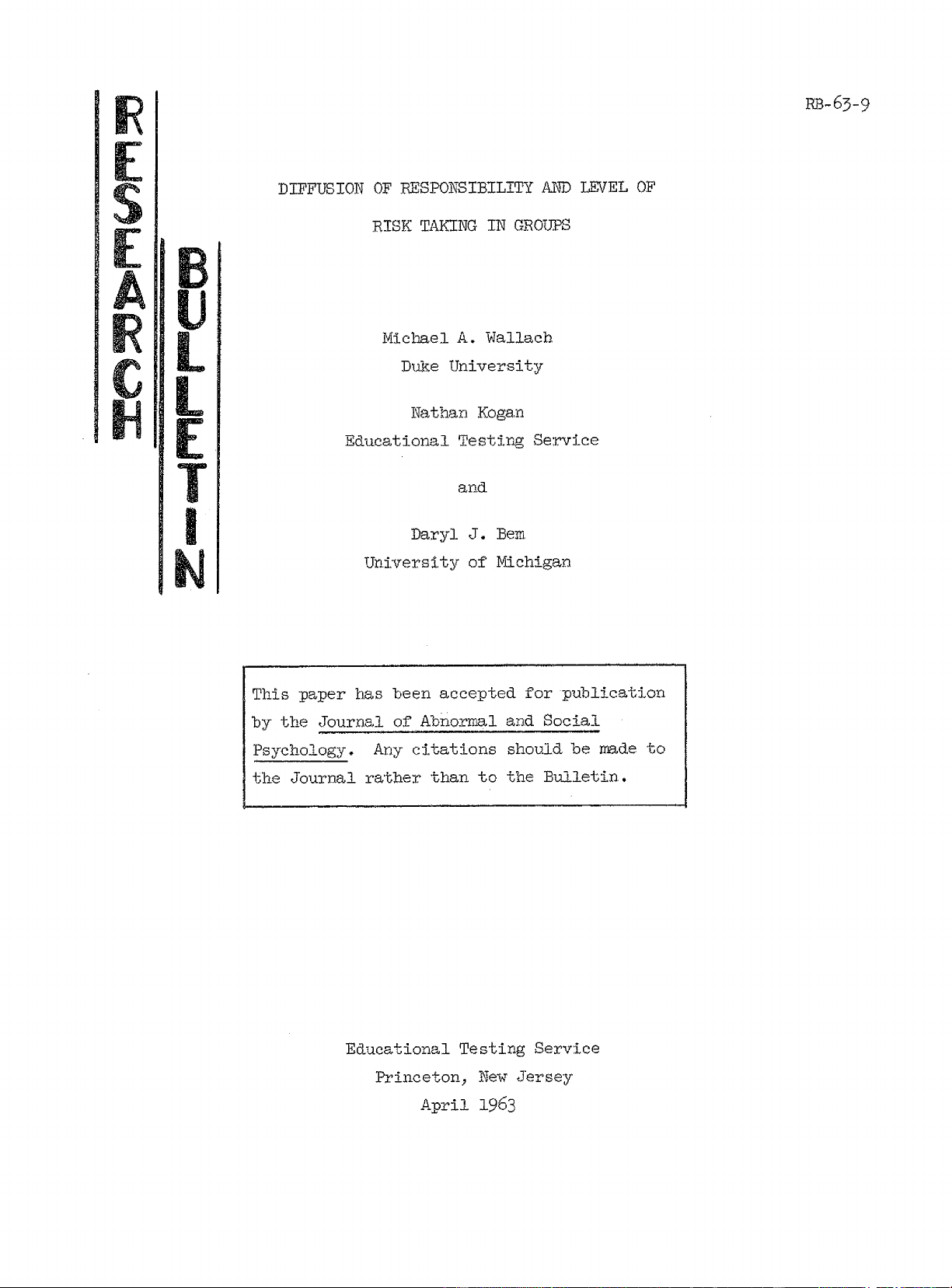
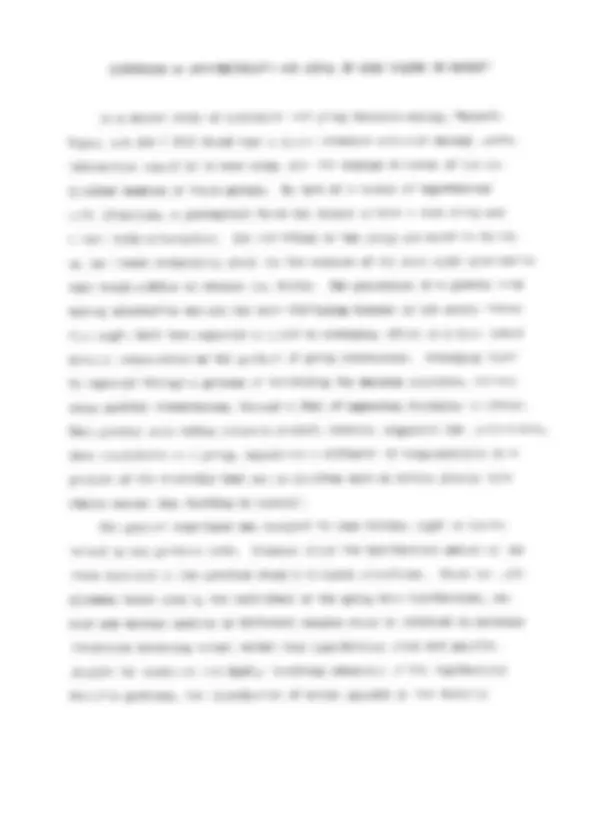
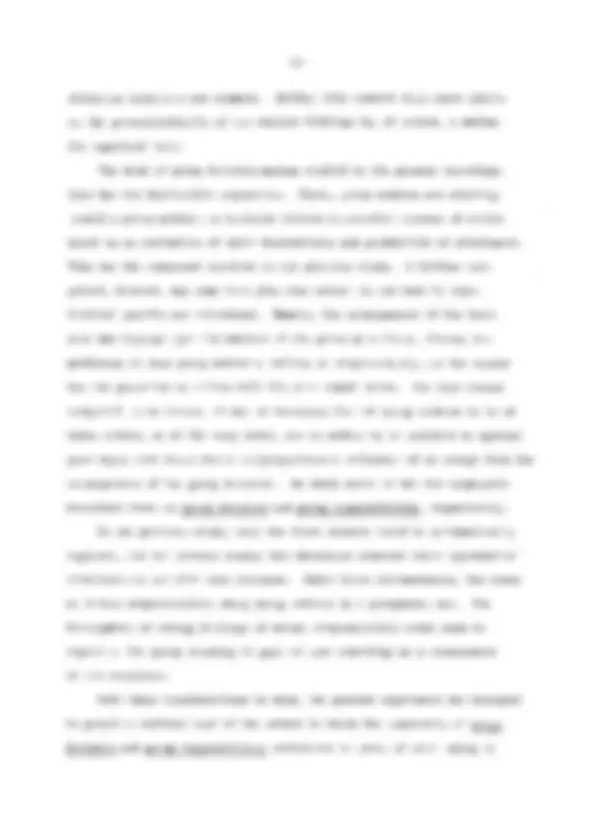
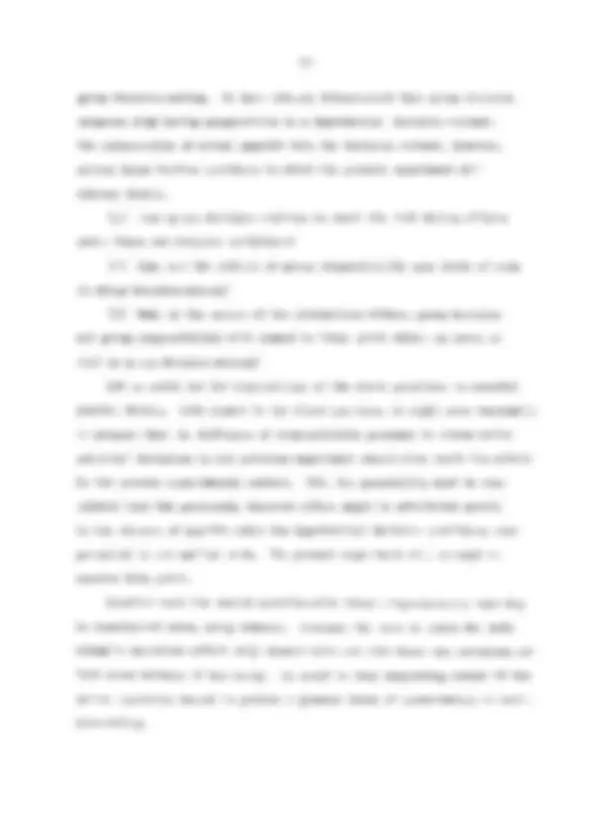
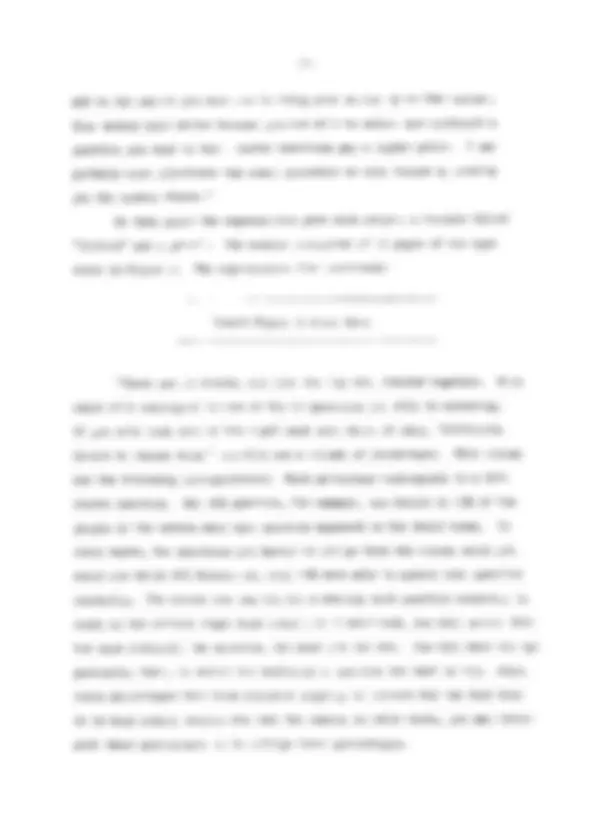
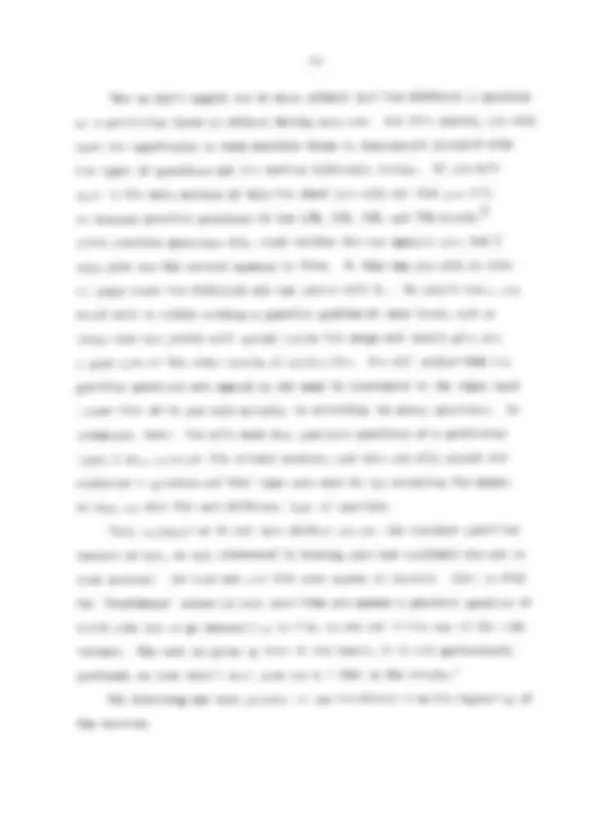
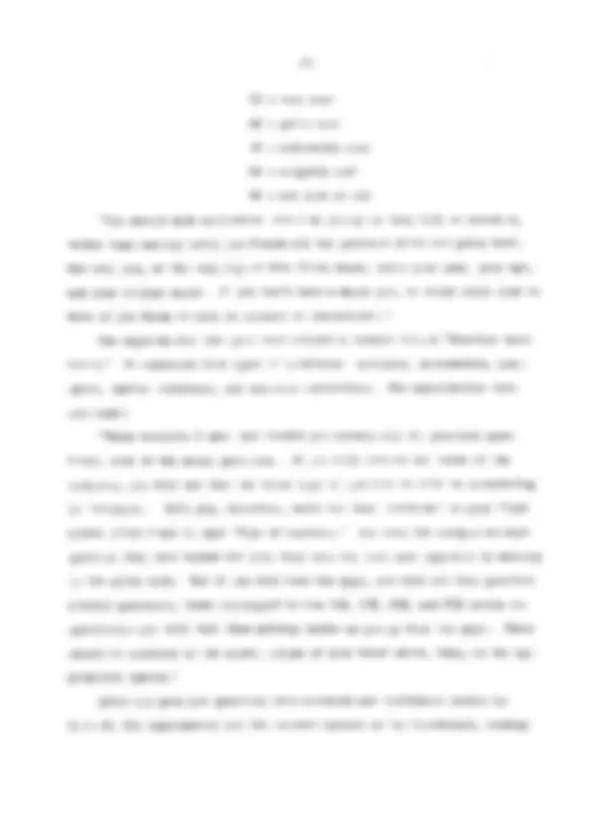
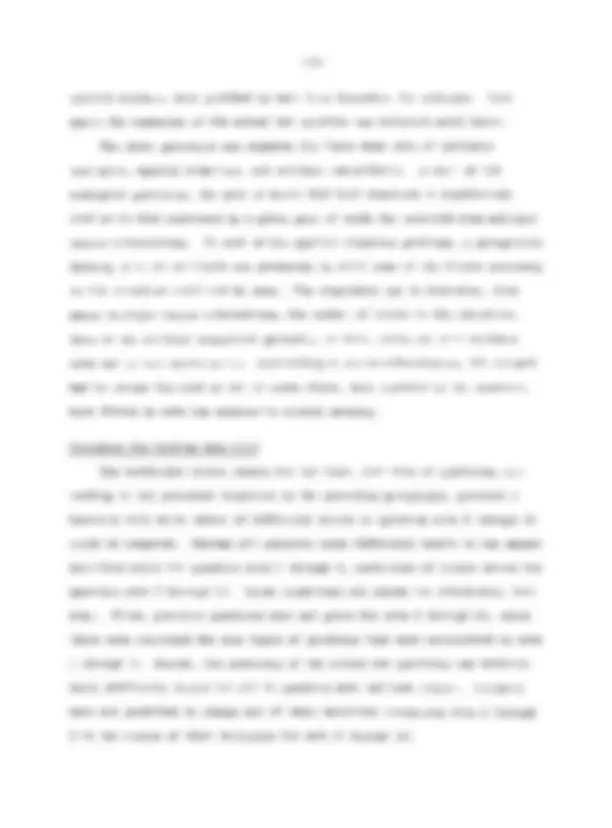
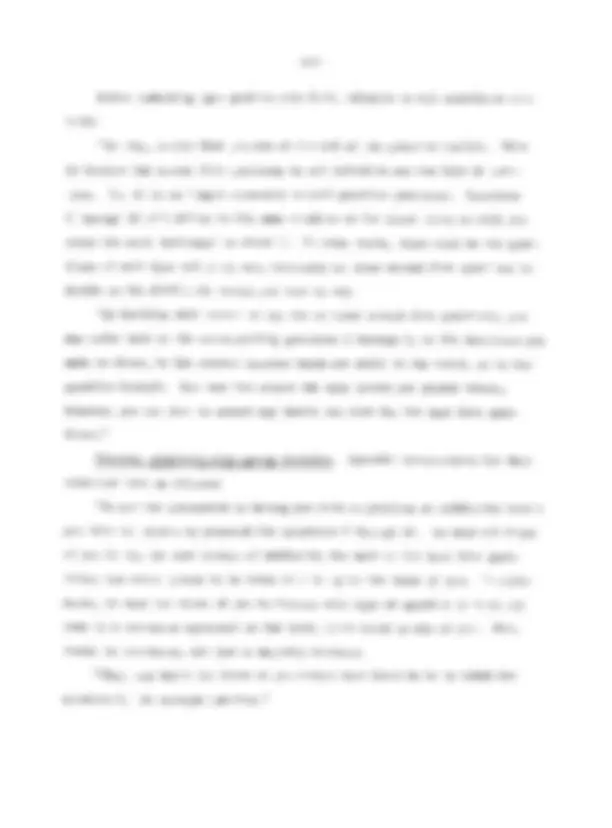
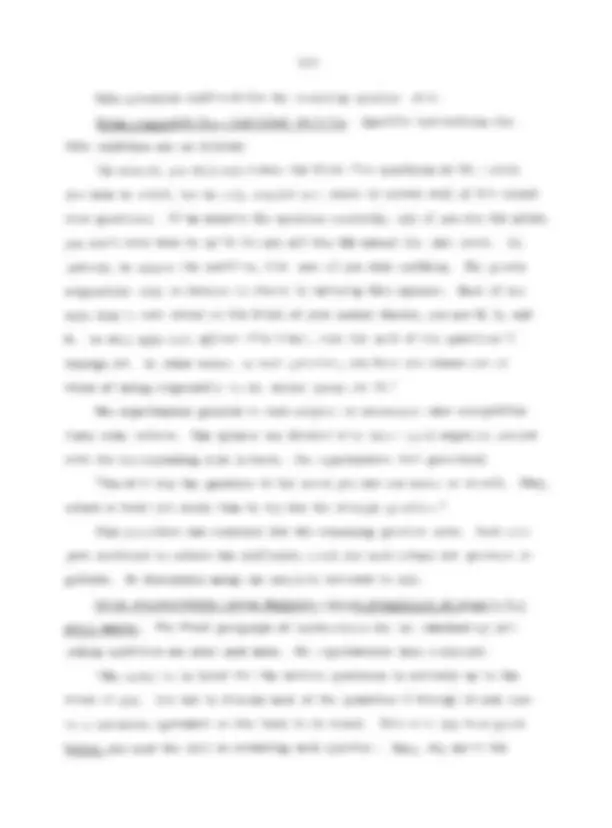
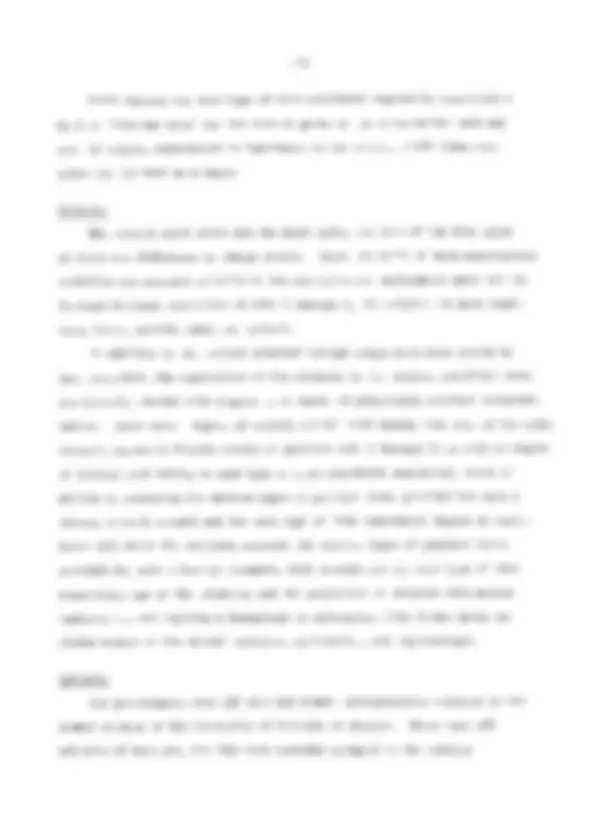
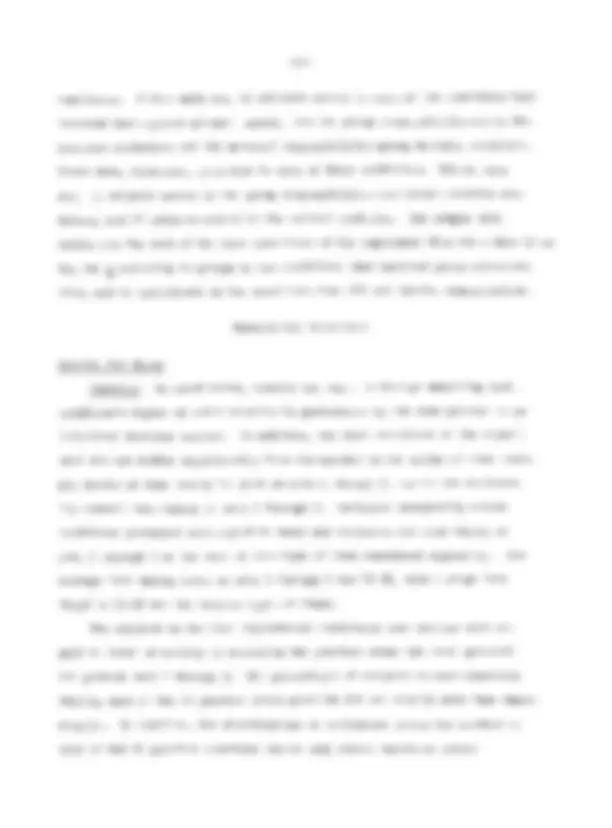
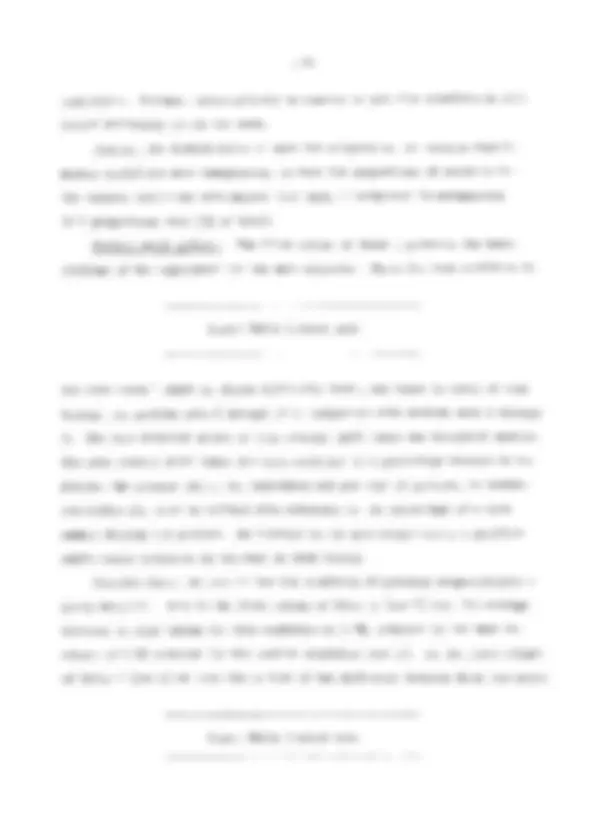
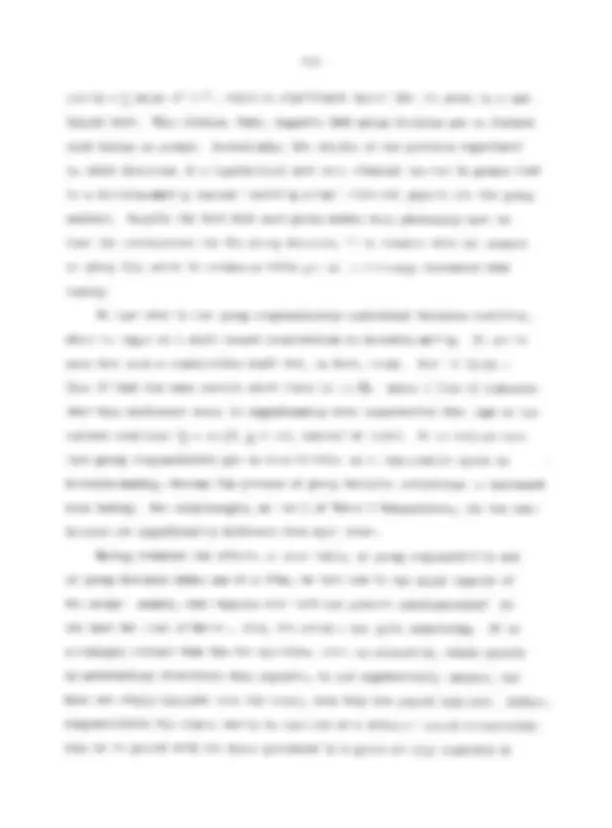
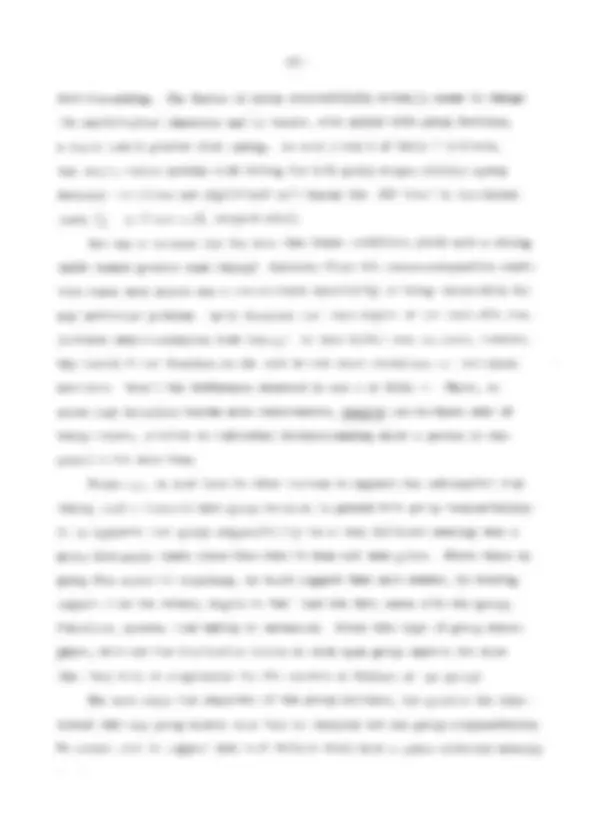
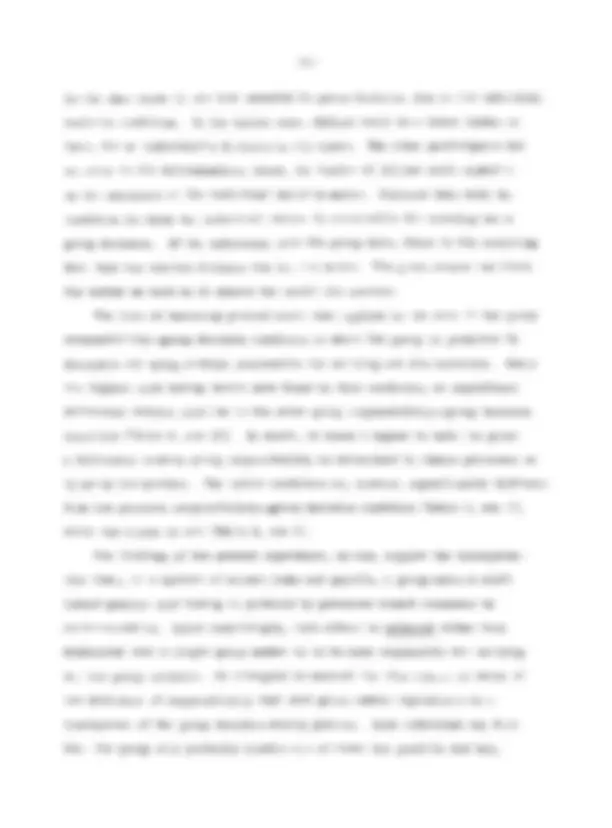
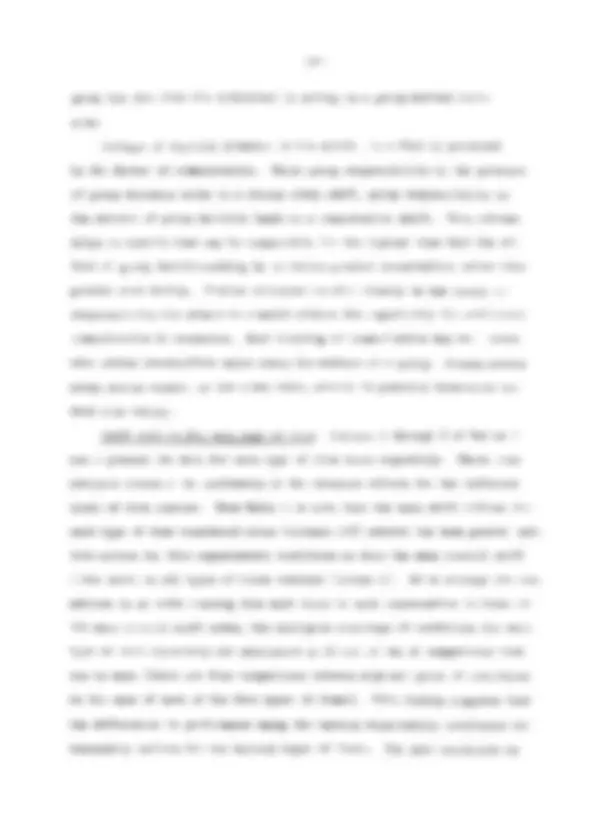
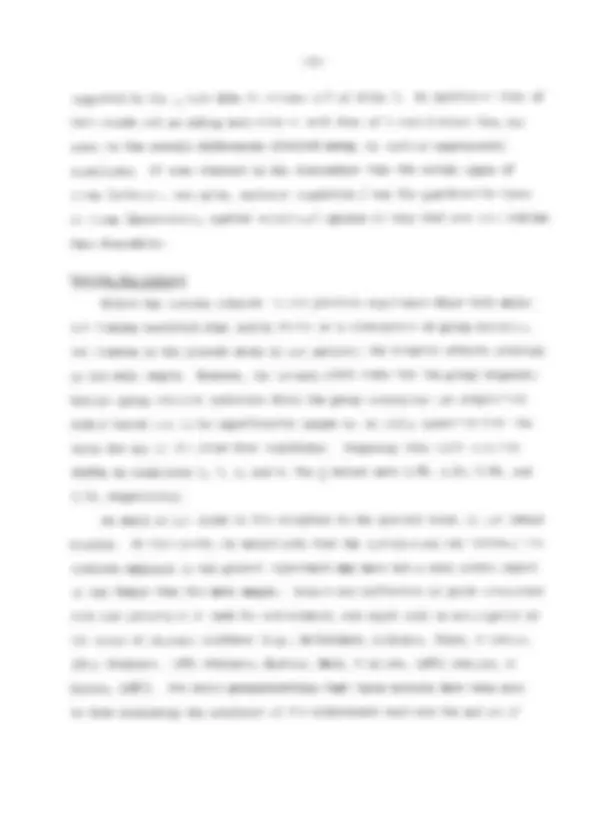
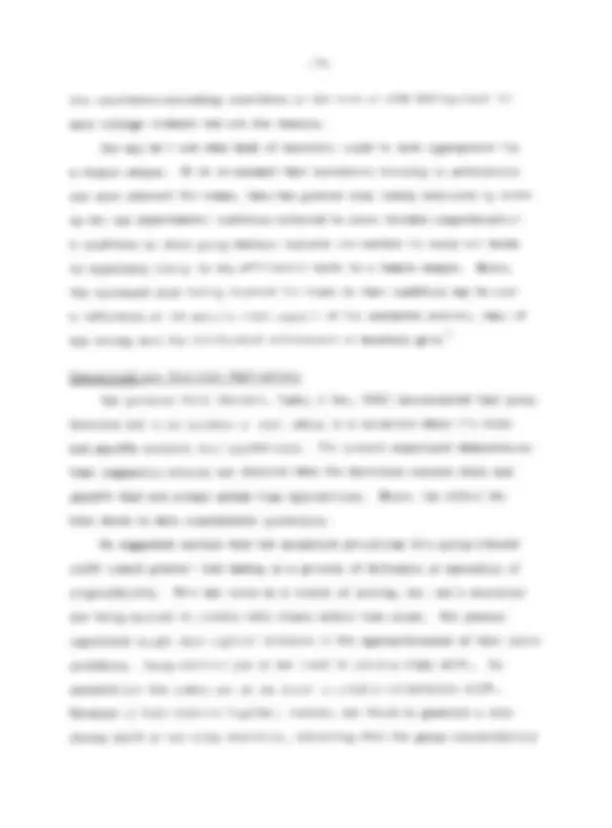
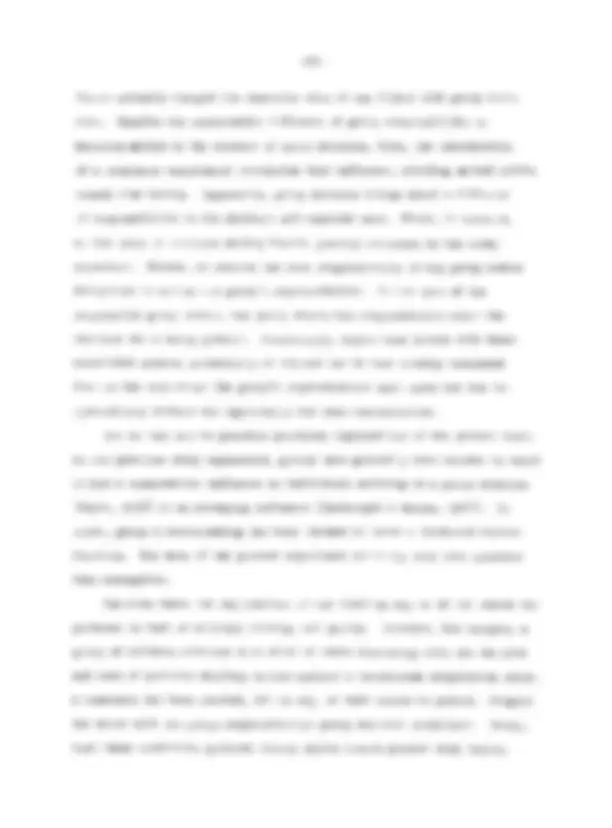
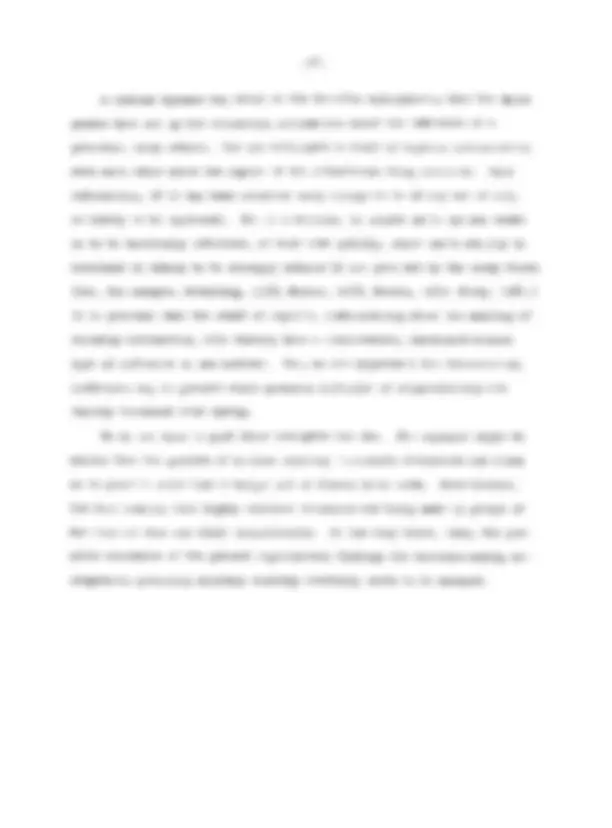
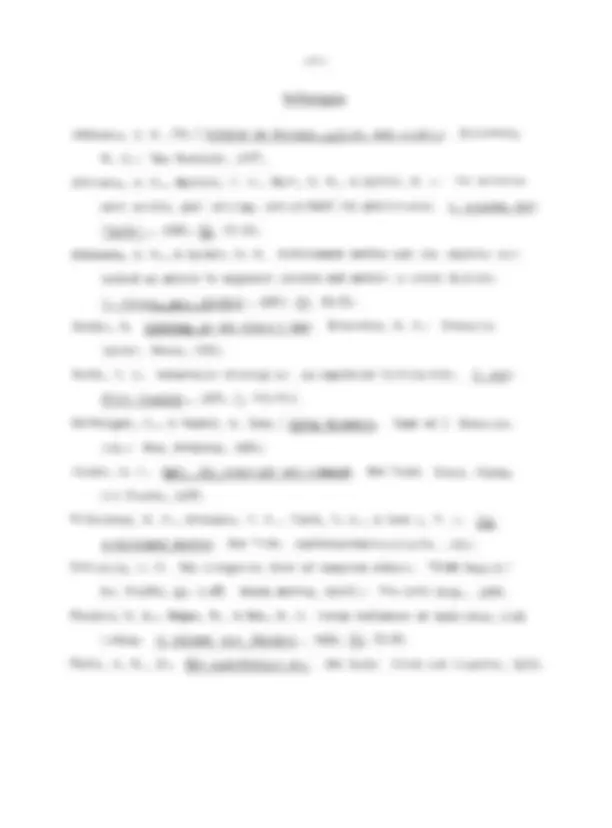
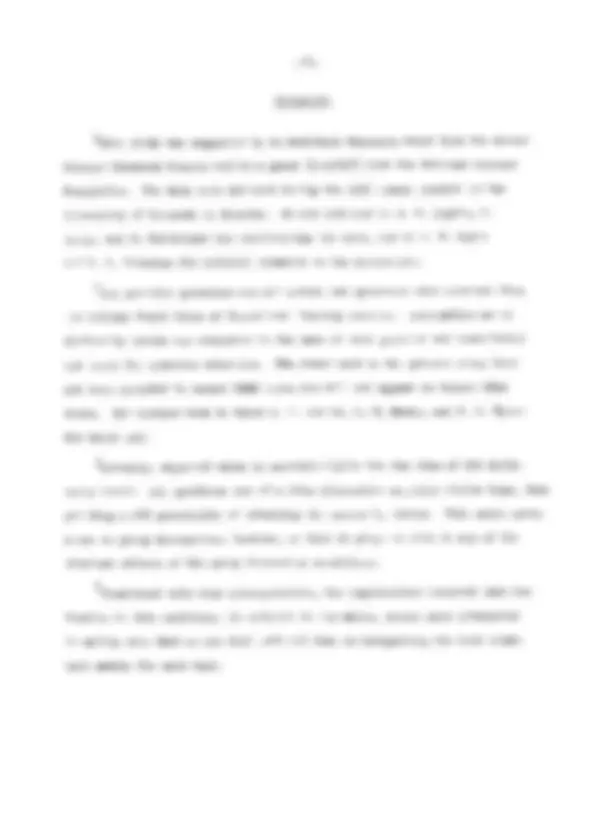
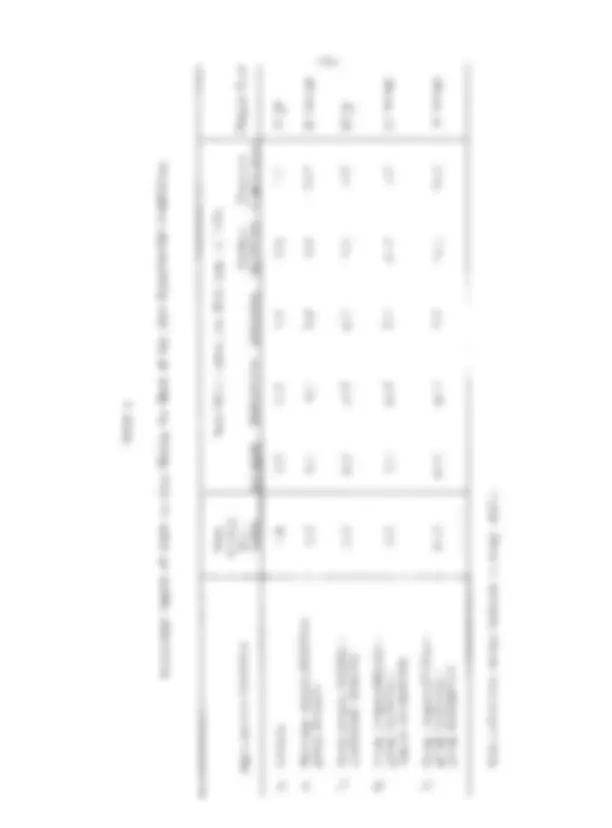
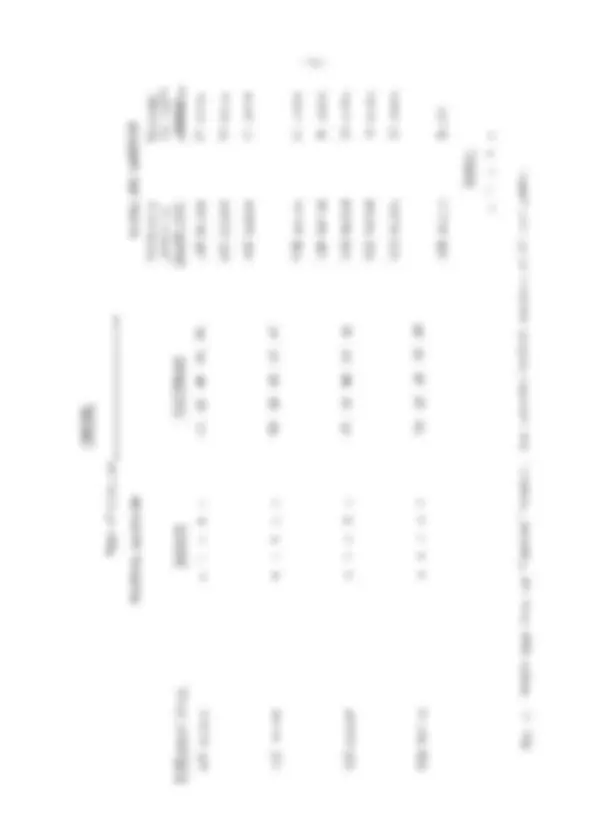


Study with the several resources on Docsity

Earn points by helping other students or get them with a premium plan


Prepare for your exams
Study with the several resources on Docsity

Earn points to download
Earn points by helping other students or get them with a premium plan
Community
Ask the community for help and clear up your study doubts
Discover the best universities in your country according to Docsity users
Free resources
Download our free guides on studying techniques, anxiety management strategies, and thesis advice from Docsity tutors
An experiment designed to investigate the impact of group decision and group responsibility on risk-taking in group decision-making. The study explores how these two components contribute to risk-taking propensities and their interaction. The document also discusses the results of the experiment, which reveal that group decision enhances risk-taking, while group responsibility acts as a conservative agent. However, when both are present, their psychological character changes, leading to increased risk-taking.
What you will learn
Typology: Lecture notes
1 / 32

This page cannot be seen from the preview
Don't miss anything!

























Michael A. Wallach Duke University Nathan Kogan Educational Testing Service and Daryl J. Bern University of Michigan
This paper has been accepted for publication by the Journal of Abnormal and Social Psychology. Any citations should be made to the Journal rather than to the Bulletin.
Educational Testing Service Princeton, New Jersey
RB-63-
Abstract
This study reports evidence supporting the following propositions: (1) Group discussion and consensus concerning decisions that involve actual risk and payoffs lead to greater risk taking than occurs in the absence of such discussion and consensus. (2) The mechanism that under- lies this group-induced shift toward greater risk taking consists of a diffusion or spreading of responsibility. Using risks and payoffs based on monetary gain and 108s for problem-solving performance} the above propositions received strong confirmation for male college subjects. The results of various experimental manipulations provided positive sup- port for viewing diffusion of responsibility as the causal factor at work.
situation injects a new element. Whether this element will place limits on the generalizability of our earlier findings is, of course, a matter for empirical test. The kind of group decision-making studied in the present investiga- tion has two distinctive components. First, group members are striving toward a group product--a decision between alternative courses of action based on an evaluation of their desirability and probability of attainment. This was the component involved in our previous study. A further com- ponent, however, may come into play when actual in contrast to hypo- thetical payoffs are introduced. Namely, the consequences of the deci- sion !P.ay impinge upon the members of the group as a whole, thereby en- gendering in each group member a feeling of responsibility for the others who are perceived as linked with him in a common cause. For this second component to be active, it may be necessary for the group members to be of equal status, or at the very least, for no member to be entitled to special privileges that would permit disproportionate enjoyment of or escape from the consequences of the group decision. We shall refer to the two components described above as group decision and group responsibility, respectively. In our previous study, only the first element could be systematically explored, for the obvious reason that decisions rendered under hypothetical conditions do not have real outcomes. Uhder these circumstances, the issue of mutual responsibility among group members is a peripheral one. The development of strong feelings of mutual responsibility would seem to depend on the group standing to gain or lose something as a consequence of its decisions. With these considerations in mind, the present experiment was designed to permit a critical test of the extent to which the components of group decision and group responsibility contribute to level of risk taking in
group decision-making. We have already demonstrated that group decision enhances risk taking propensities in a hypothetical decision context. The introduction of actual payoffs into the decision context, however, raises three further questions to which the present experiment will address itself. (1) Does group decision continue to exert its risk taking effects under these new decision conditions? (2) What are the effects of group responsibility upon level of risk in group decision-making? (3) Wha t is the nature of the interaction between group decision and group responsibility with regard to their joint effect on level of risk in group decision-making? Let us spell out the implications of the above questions in somewhat greater detail. With regard to the first question, it might seem reasonable to propose that the diffusion of responsibility presumed to characterize subjects' decisions in our previous experiment should also exert its effect in the present experimental context. Yet, the possibility must be con- sidered that the previously observed effect might be attributed merely to the absence of payoffs under the hypothetical decision conditions that prevailed in our earlier work. 'Ilhe present experiment will attempt to resolve this point. Consider next the second question--the mutual responsibility that wey be experienced among group members. Contrast the case in which the indi- vidual1s decisions affect only himself with the case where his decisions af- fect other members of his group. It would be very surprising indeed if the latter condition failed to produce a greater level of conservatism in deci- sion-making.
Method
Procedure for Problem Sets 1- Prospective subjects were told that the experiment concerned decision- making and problem solving and that they could earn up to $15 by participat- ing. They were informed that the session would run no longer than one hour, and were guaranteed that they would not earn less than $1.25. In all conditions of the experiment, three college students met the experimenter at a prearranged time and spread out around a conference table in a seminar room with a blackboard. They were without previous acquaintance and of the same sex. Each was given to understand that he would work individually. He then was told: If This is psychological research in the general area of decision- making and problem solving. The experiment itself is quite straight forward in the sense that you will be able to see the kinds of things we are interested in as you go through it; there isn't anything particularly hidden or mysterious about it. You will probably be most interested in the problem-solving aspect of the experiment since it is upon this that your salary depends. Your main task, which will take place in about the last 20 minutes of this hour, will be to answer 10 multiple choice ques- tions which have been taken from old College Board examinations. Specifically, these have been taken from the morning aptitude tests, which means that no particular course knowledge is assumed other than a high school education. In other words, there will be no English Literature questions, calculus prob- lems, etc. Your salary varies from a maximum of $15 down to the minimum of $1.25 because you will be paid for each question answered correctly, and you will not be paid for questions not answered correctly; it's that simple. If you should hawen to earn less than $1.25 in this way, then we
add to the amount you have won to bring your salary up to that amount. Your salary also varies because you are able to select how difficult a question you want to try: harder questions pay a higher prize. I can probably best illustrate the exact procedure we will follow by showing you the answer sheets." At this point the experimenter gave each subject a booklet titled "Choices" and a pencil. The booklet consisted of 10 pages of the type shown in Figure 1. The experimenter then continued:
Insert Figure 1 about here
"There are 10 sheets, all like the top one, stapled together. Each sheet will correspond to one of the 10 questions you will be answering. If you will look over on the right hand side where it says, t'Difficulty levels to choose from,11 you will see a column of percentages. This column has the following interpretation: Each percentage corresponds to a dif- ferent question. The 30% question, for example, was failed by 3010 of the people in the nation when that question appeared on the Board exams. In other words, the questions get harder as you go down the column until you reach one which 90% failed--or, only 10% were able to answer that question correctly. The amount you can win for answering each question correctly is shown in the extreme right hano. column; as I mentioned, you will notice that the more difficult the question, the more you can win. You will have the op- portunity, then, to select how difficult a question you want to try. Also, these percentages have been adjusted slightly to correct for the fact that it is high school seniors who take the exams; in other words, you may inter- pret these percentages to be college level percentages.
vs =:^ very sure QS =:^ quite^ sure .MB =: moderately sure SS =:^ slightly sure NS (^) '" not sure at all If You should mark confidence levels as you go so they will be accurate, rather than waiting until you finish all the practice items and going back. Now will you, at the very top of this first sheet, write your name, your age, and your college major. If you donlt nave a major yet, we would still like to know if you think it will be science or non-science. tf The experimenter then gave each subject a booklet titled "Practice Ques- tions.1! It contained five types of questions: antonyms, mathematics, anal- ogies, spatial relations, and sentence completions. The experimenter then continued: ttThese booklets I have just handed you contain all the practice ques- tions, none of the money questions. If you will look at the cover of the booklets, you will see that the first type of question we will be considering is 'antonyms.l Will you, therefore, write the word 'antonyms' on your first answer sheet where it says 'Type of Question.' Now read the example antonym question they have worked for you; they want the word most opposite in meaning to the given word. Now if you will turn the page, you will see four practice antonym questions; these correspond to the loi, 35%, 60%, and 85% levels re- spectively--you will feel them getting harder as you go down the page. These should be answered in the answer column of your first sheet, then, in the ap- propriate spaces." After all practice questions were answered and confidence levels in- dicated, the experimenter put the correct answers on the blackboard, reading
them out as he wrote them: (e.g., "The correct answers to these are b, b, c, d, in that order'~). They remained on the board for the remainder of the session. Accurate and equalized feedback as to correct answers thus was provided for all subjects. Toward the same end, in this and in all other practice sets, the experimenter explained in detail the rationale or method of solution for all of the more difficult questions, and encouraged and answered questions about the items. Group discussion, in those conditions where the subjects later experienced it, therefore could not provide any more feedback concerning correct answers to these practice questions or the rationales for the correct answers, than was already possessed by the SUbjects in all cona.itions. The experimenter then continued: "Now that you see how difficult the problems are at the various levels and about how well you can do on them, we want you to select one difficulty level to try for money. You do this by circling one of the nine percentage levels in the right hand colRmD. For example, after seeing these practice
should circle that level. Then, later when you answer all the money ques- tions, I will give you ~ antonym question which is slightly harder than
you will win $1.50 for it; if you miss it, you will get nothing. This same procedure applies to whatever level you select: the correct answer earns you the amount shown in the extreme right hand column; failing the question means you earn nothing. Remember that this does not obligate you to select the same level for any other question; this decision you are making right now applies only to the one antonym question, which will be drawn from the same files as the practice problems you just worked. The practice problems are tntended
correct answers, were provided as have been described for antonyms. Once
The above procedure was repeated for three more sets of problems: analogies, spatial relations, and sentence completions. In each of the analogies questions, the pair of words that best expressed a relationship similar to that expressed by a given pair of words was selected from multiple choice alternatives. In each of the spatial relations problems, a perspective drawing of a set of blocks was presented in which some of the blocks necessary to the structure could not be seen. The respondent was to determine, from among multiple choice alternatives, the number of blocks in the structure. Each of the sentence completion problems, in turn, consisted of a sentence with one or two blanks in it. From multiple choice alternatives, the subject had to choose the word or set of .words Which, when inserted in the sentence, best fitted in with the sentence's overall meaning.
Procedure for Problem Sets 6- The difficulty levels chosen for the first five sets of questions, ac- cording to the procedure described in the preceding paragraphs, prOVided a baseline with which choice of diffiCUlty levels on question sets 6 through 10 could be compared. Whereas all subjects chose difficulty levels in the manner
question sets 6 through 10. These conditions all shared two attributes, how- ever. First, practice questions were not given for sets 6 through 10, since these sets concerned the same types of questions that were encountered in sets
until difficulty levels for all 10 question sets bad been chosen. Sub:jects were not permitted to change any of their decisions concerning sets 1 through
Before embarking upon problem sets 6-10, subjects :i.n all conditions were told: llyou will notice that you are at the end of the practice booklet. This is because the second five questions do not introduce any new type of ques- tion. So, it is no longer necessary to work practice questions. Questions
tions of each type and it is only necessary on these second five questions to decide on the difficulty levels you care to try. "In deciding what levels to try for on these second five questions, you
made on those, to the correct answers which are still on the board, or to the question booklet. You need not select the same levels you picked before, however; you are free to select any levels you wish for the last five ques- tions.!! Personal responsibility--group decision. Specific instructions for this condition read as follows: llWe are now interested in having you work on problems at difficulty levels you have not chosen by yourself. for que stions 6 thr01Jgh 10. We want all three of you to try the same levels of difficulty for each of the last five ques- tions; the exact levels to be tried will be up to tbE three of you. In other words, we want the three of you to discuss each type of question in turn and come to a unanimous agreement on the level to be tried by all of you. This should be unanimous, not just a majority decision. I! Okay, why don I t the thre'e of you' decide what level 'i s to be tried· for
question. n This procedure was continued for the remaining question sets. In the two conditions where the spinner was used--group responsibility with group decision (chance designation) and group responsibility with in- dividual decision--the subjects knew that the spinning would be deferred
chosen. Group responsibility--group decision--group designation of responsible group member. Specific instructions for this condition duplicated the imme- diately preceding "chance designationll^ condition, except that the choice of who would be responsible for answering each actual bet question was determined not by a random device, but rather by an agreement among the three subjects. By this means, subjects could choose as their representative, for each type of problem, the person among them who seemed most skilled in handling it. Control condition. This condition represented a continuation, for problem
The three subjects continued to work individually. Comparison of the difficUlty levels chosen on sets 6 through 10 with those chosen on sets 1 through 5 indi- cated the magnitude of practice effects ensuing from a repetition of the ini- tial task under identical conditions, and constituted a baseline against which. the effects of the other conditions could be evaluated. Answering of all actual bet questions was carried out in each condition after all diffiCUlty levels had been decided upon, While these data are i.rrelevant to the purposes of the present experiment, We carried through this phase in order to fulfill our obligations to the subjects.
Mode of Analysis for Changes in Risk Taking The basic index is the degree and direction of shift in risk taking on
to this as the overall shift index. In the control condition and the group responsibility--individual decision condition, where no group interaction took place, the overall shift index was computed for each individual. It consisted
tions involving group decision, the overall shift index was computed for each group. It consisted of the mean of the group's agreed upon difficulty levels
magnitude of the overall shift indices obtained in one experimental condition then were compared with the direction and magnitude of the overall shift in- dices obtained in another condition. In addition to the overall shift index, similar indices also were con- structed for each type of item considered separately. For example, the item shift index for antonyms involved, in the control condition and the group re- sponsibility--individual decision condition, each individual's chosen difficulty
group decision conditions, it involved each grouprs consensus difficulty level
ficulty levels for set 1. Analogously, the item shift index for mathematics
tion and magnitude of the shift index for a particular type of item obtained in one experimental condition were then compared with the direction and magnitude of the shift index for that same type of item obtained in another condition.
involved three-person groups: namely, the two group responsibility--group de~ decision conditions and the personal responsibility--group decision condition. There were, therefore, 15 groups in each of these conditions. Within each sex, 15 subjects served in the group responsibility--individual decision con- dition, and 18 subjects served in the control condition, The sample size within sex for each of the five conditions of the experiment thus was either 15 or 18", the!'!. referring to groups in the conditions that involved group cormnunica- tion, and to individuals in the conditions that did not involve cormnunication. Results and Discussion Results for Males Controls. As noted above, control was built in through measuring each condition's degree of shift relative to performance by the same persons in an individual decision context. In addition, the five conditions of the experi- ment a.id not differ significantly from one another in the subjects r mean over-
conditions prevailed with regard to means and variances for risk taking on
The subjects in the five experimental conditions were similar with re- gard to level of ability in answering the practice items that were prOVided for problem sets 1 through 5. The percentages of subjects in each condition failing each of the 20 practice i terns prOVided d.id not vary by more tha.n chance margins. In addition, the distributions of confidence levels for answers to each of the 20 practice questions showed only chance variation across
conditions. Further, intransitivity in answers to practice questions at dif- ferent difficulty levels was rare. Finally, the distributions of ages for subjects in the various experi- mental conditions were homogeneous, as were the proportions of subjects in the various conditions with majors that imply a background in mathematics
Overall shift indices. The first column of Table 1 presents the basic findings of the experiment for the male subjects. Shown for each condition is
Insert Table 1 about here
the mean overall shift in chosen difficulty level, and hence in level of risk
The mean overall shift index for each condition is a percentage because it in- dicates the average shift, per individual and per type of problem, in prefer- red difficulty level as defined with reference to the percentage of a norm sample failing the problem. An increase in the percentage--i.e., a positive shift--hence indicates an increase in risk taking. Consider first the results for the condition of personal responsibility-- group decision. Note in the first column of Table 1 (row 2) that the average
crease of 2.4% obtained for the control condition (row 1). In the first column of Table 2 (row 1) we note that a test of the difference between these two means
Insert Table 2 about here